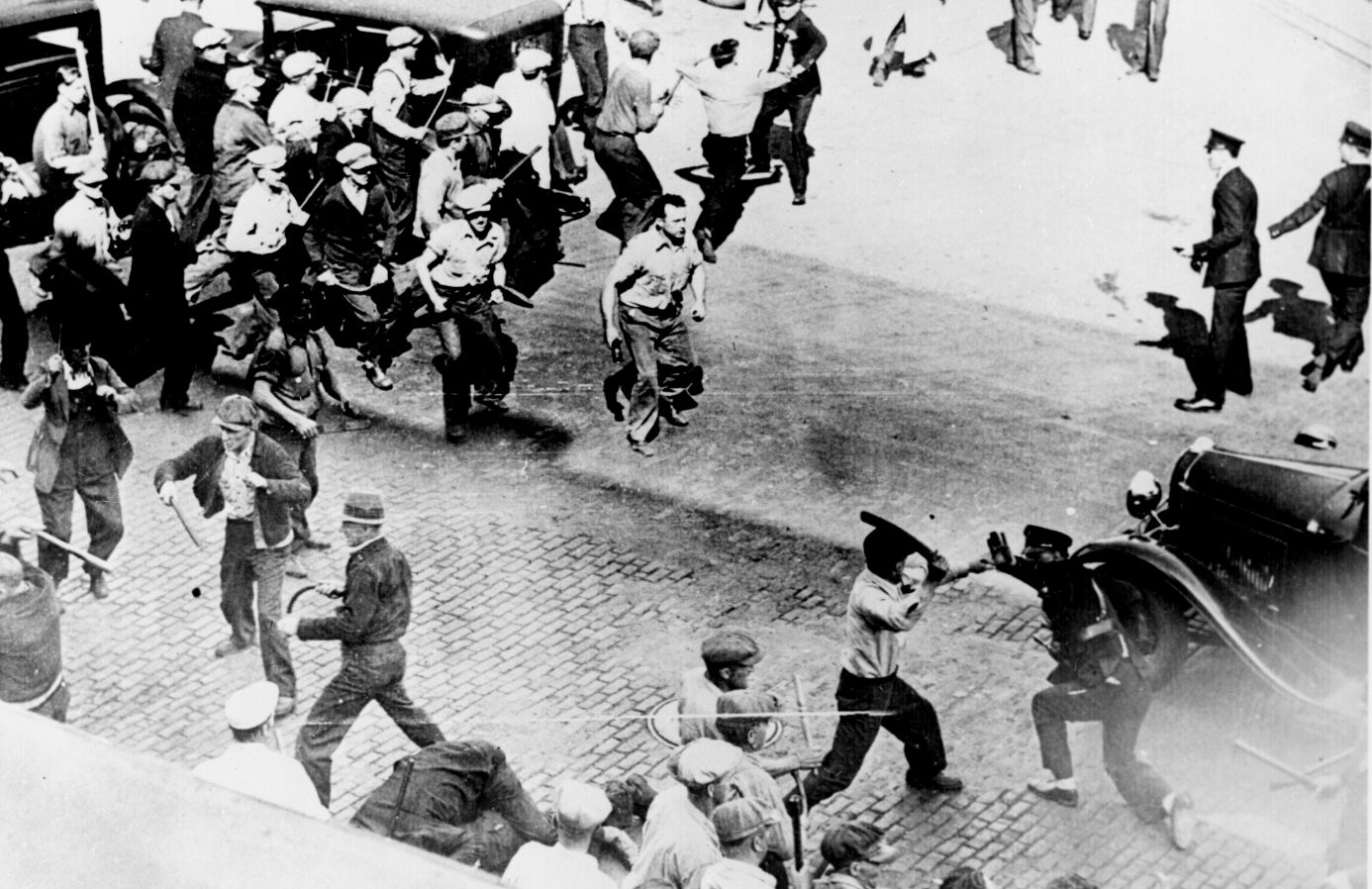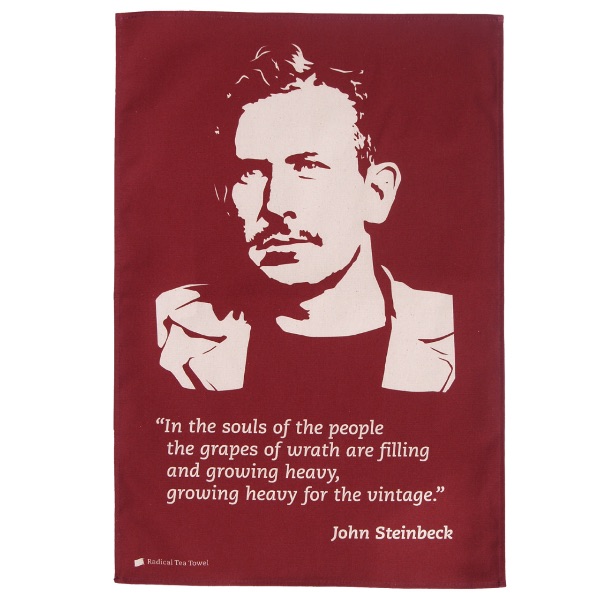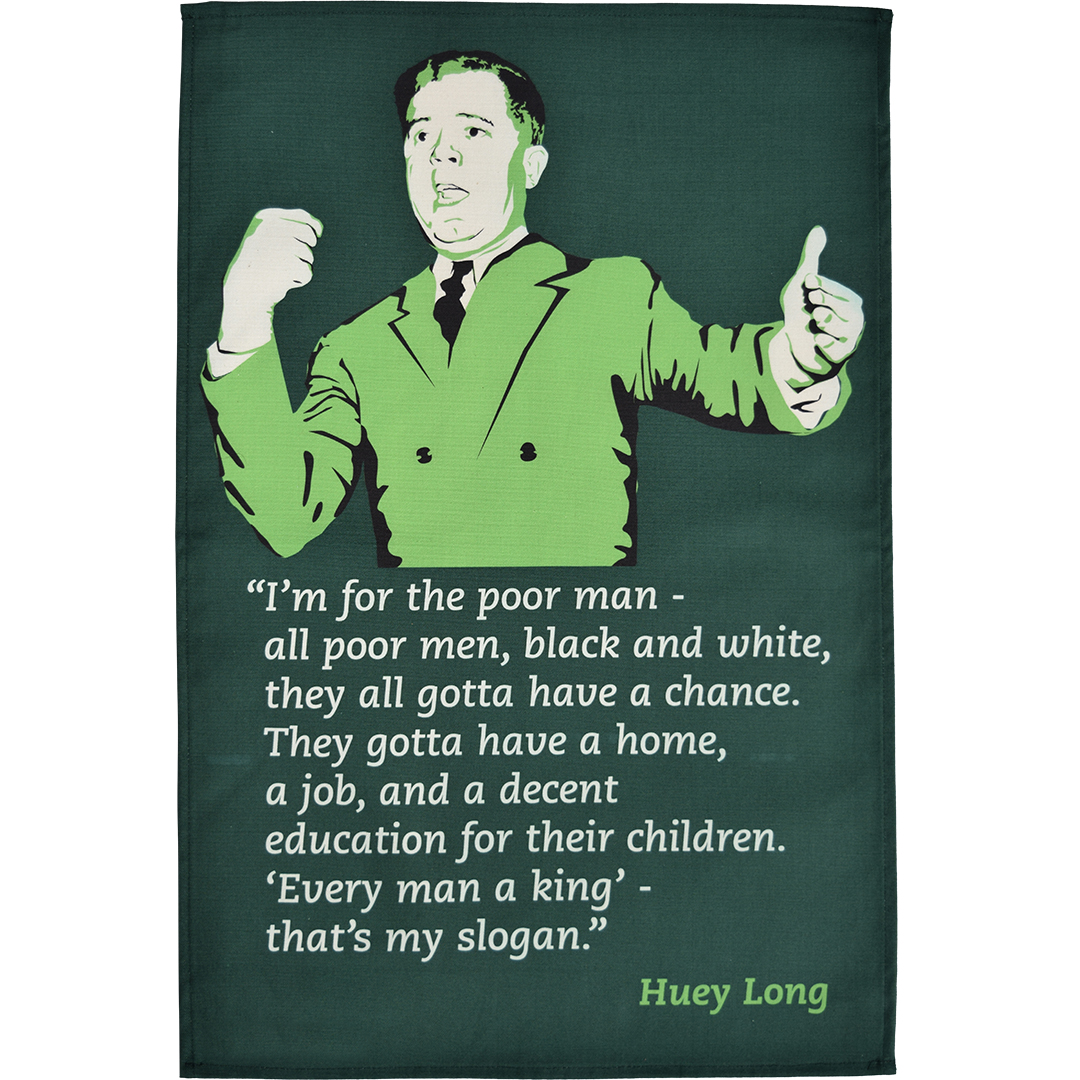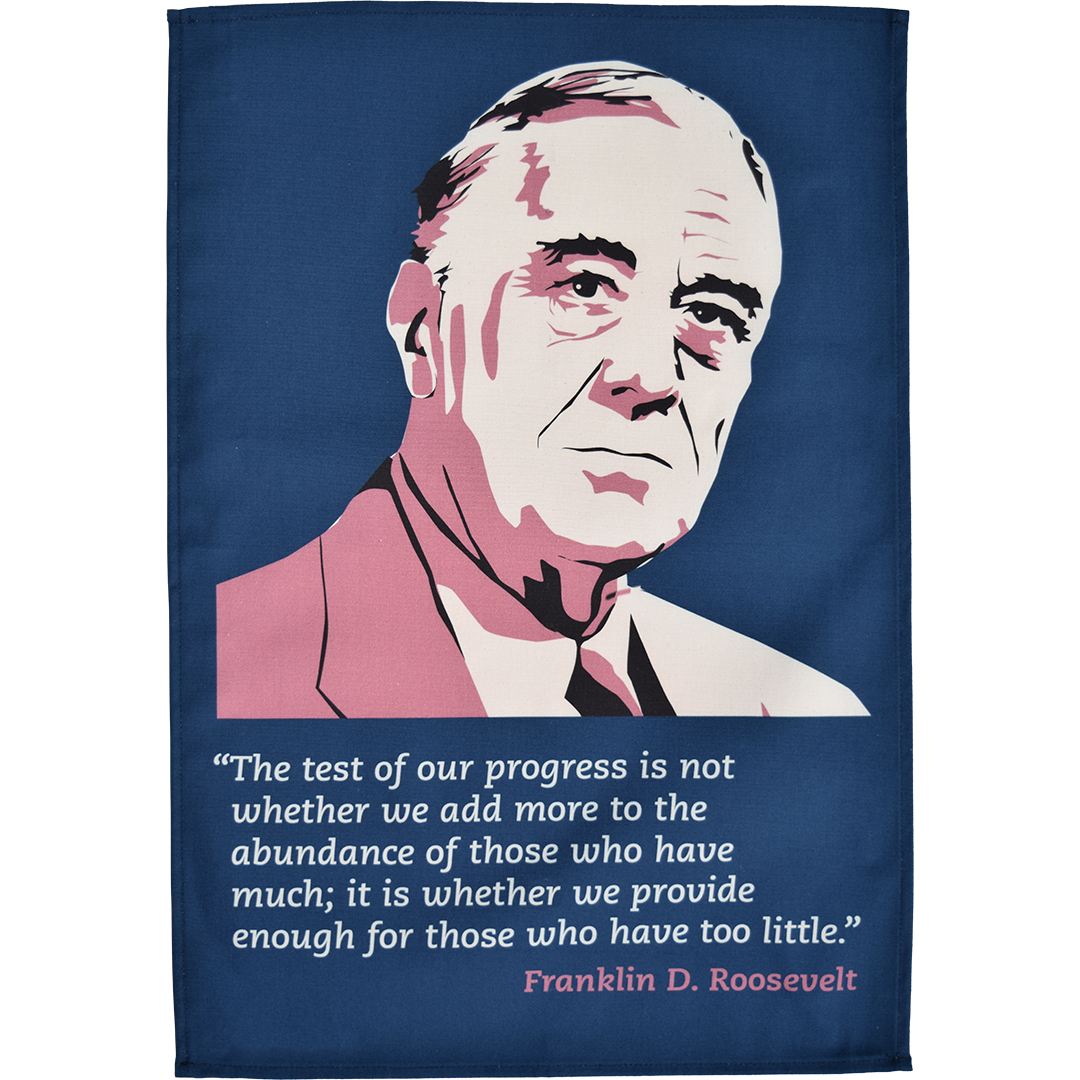Teamsters United: The Minneapolis General Strike of 1934
Posted by Pete on May 15th 2023

On this day in 1934, workers across Minneapolis went on strike for union recognition
In May 1934, it was class struggle in the Midwest.
The Great Depression led to poverty across America. Workers would have to organise to survive.
In Minneapolis, the Teamsters and truckdrivers were the ones on the frontline.
They wanted union recognition and better pay, but the trucking companies weren’t going to budge without a fight.
Steinbeck's novel "The Grapes of Wrath", published in 1939, focuses on a family of tenant farmers during the Great Depression
Click to view our John Steinbeck tea towel
At the national level, the International Brotherhood of Teamsters was a very conservative labor union, rarely enthusiastic about striking.
But on the ground in Minnesota, the radical rank-and-file didn’t care. They began organising local truckers to fight.
At the end of 1933, Minneapolis Teamsters in Local 574 launched a strike among coal drivers, and won.
They were drawing on the ideas and methods of early twentieth-century socialism in the U.S., as well as the diverse labor traditions of Minnesota’s multinational working class. Scandinavian immigrants were especially prominent among the strikers.
This was the era of Huey Long, a left-wing senator who argued for the redistribution of wealth
Click to view our Huey Long tea towel
After the coal strike, the Minnesota Teamsters turned their sights on a bigger prize: union recognition in Minneapolis itself.
In 1934, Minneapolis was an anti-union town, run by a bosses’ syndicate called the Citizens Alliance.
Workers needed their unions now more than ever. But without recognition, the Teamsters couldn’t bargain as effectively for their members.
Sure, FDR's New Deal had created some new opportunities for American labor, but those opportunities still had to be seized.
The trucking bosses in Minneapolis were determined keep their workers as powerless as before. They refused to recognise the Teamsters.
So, on 16 May, all the truck drivers and warehouse workers in the city went on strike.
These workers were the lifeblood of Minneapolis. When they walked out, the city shut down.
FDR's New Deal was a radical plan to expand the state, but ordinary workers were still struggling to make ends meet
Click to view our Franklin D. Roosevelt tea towel
The strikers made sure to let certain farm goods into town to maintain food supplies. Their enemy were the bosses, not the people.
At first, it all seemed to be going well for the strikers. The workers had popular support, and an effective organisation.
But for the ruling class in Minneapolis, this couldn’t be allowed to go on. Things were about to get pretty ugly.
On 19 May, Minneapolis police teamed up with the bosses’ hired goons to attack strikers in the market area. Several were injured, and rushed back to the Teamsters’ infirmary at strike HQ.
A couple of days later, there were pitched battles all over the city. On the one side, the cops and armed militia from the Citizens Alliance, on the other, the Teamsters and their working-class allies.
After that show of violence, solidarity for the Teamsters flourished in Minnesota and across the U.S.
The American Federation of Labor (AFL) gave financial support, and allowed the Minneapolis Teamsters to use its facilities. And other workers in the city walked out too. Now it was a general strike.
There’s nothing that scares fat cat bosses more than solidarity. They knew they’d have to cut a deal sooner rather than later.
On 25 May, the Teamsters agreed a new union contract, including recognition and the reinstatement of all strikers.
They thought it was all over. But the employers weren’t to be trusted.
On 17 July, the trucking companies went back on their word and refused to include warehouse workers in the new agreement.
The Teamsters walked out again. This time, though, they wouldn’t all survive the strike.
On 20 July 1934, in the central market area, a large squad of armed police opened fire with rifles and shotguns on a mass of unarmed pickets.
“Police took direct aim at the pickets and fired to kill. Physical safety of the police was at no time endangered. No weapons were in possession of the pickets.”
After the massacre, 2 strikers had been shot dead and 67 injured.
The whole transport sector mobilised in support of the Teamsters. There were demands for the Minneapolis mayor and police chief to be impeached.
At this point, the Governor stepped in.
Concerned to avoid a full-scale class war in Minnesota, federal mediators negotiated a deal which gave the Teamsters lasting recognition.
It had been a bitter and costly struggle, but the strikers won. Minneapolis was a union town now!
Read more radical stories on our blog



